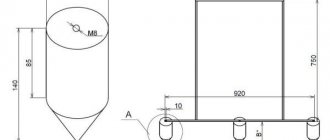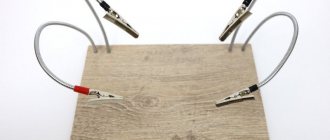Owners of country plots, vegetable gardens and private cottages are looking forward to the start of spring field work. Digging opens the garden season. At this time, manual labor enthusiasts take shovels - objects without which it is impossible to dig up the soil, plant something in it or dig something up. However, working with them is accompanied by lower back pain and enormous physical exertion. Today, thanks to the latest technical developments, it is possible to reduce the load on the back muscles and speed up the work process several times, since new devices for digging a vegetable garden have appeared - improved shovels, electric shovels and forks for digging the earth.
Variety of gardening tools
Working with soil is not an easy task. For this reason, it is extremely important to choose the most convenient equipment possible, which is capable of not only to some extent independently performing the required amount of work, but also significantly facilitating its implementation. There are many modern solutions for more comfortable farming. The main ones include:
- shovel with oval holes;
- forks with a shovel tip;
- a shovel equipped with a steering wheel;
- "tornado";
- electric shovel, etc.
Below we will look at just some types of devices for gardening and land work.
Cultivator-root remover
This garden puller will help get rid of the long, rod-shaped roots found in plantain, sorrel, and dandelion. In addition, with its help you can get rid of the roots of old thickened bushes, which can be equated to weeds. The tool looks like a two-pronged fork with flat, wide teeth and a gap between them.
The special arrangement and shape of the root remover teeth helps to do this job quickly and easily. In addition, the device helps to process the tree trunks of fruit trees without harming the roots. The cultivator is easy to handle: it is easy to assemble and operate. The instructions for use will tell you how to assemble it.
Shovel with oval holes
This device with holes is a convenient tool for work both in the garden and on personal plots. This device is used in the process of digging up potatoes and digging up soil, loosening individual areas of the soil.
This unit is interesting in that it is equipped with a pointed bucket measuring 210 by 280 mm with narrow oval holes drilled in it. Due to these holes, clods of earth do not stick to the bucket, and when digging, large stones and roots are retained in it.
These features of the device significantly make the work easier, since you do not need to often bend down and manually remove everything stuck from the bucket. In addition, because of the holes, the device has less weight, so when digging in large areas, the worker will be less tired.
This unit is convenient for digging up an area with any type of soil, since it simultaneously digs up and loosens the soil. The tool is made of hardened steel and has a protective anti-corrosion layer.
The advantages of this product include
- simplicity and speed of production;
- Any available materials will do;
- low or almost zero cost.
The device can be made in various sizes. Thanks to this, the process of removing unnecessary plants is easy to carry out even while standing. Which is very convenient for older people.
As you can see, making an attachment for a screwdriver to remove weeds is not difficult. The work on manufacturing the device takes literally a few minutes, and the benefits of using a simple design are enormous.
Forks with a spade tip
This tool is literally indispensable when digging up heavy types of soil, since its design makes it possible not to exert too much effort during work. The spade fork has, in addition to the usual fork teeth, one bayonet located on the edge. This protrusion differs from others in its greater sharpness and width. The bayonet of this device penetrates the soil layer without much effort, and the remaining teeth can easily be placed behind it.
When digging up potatoes, for example, the fruit will remain on the fork and the soil will slide back. In this case, you don’t have to bend over and pick up the tubers manually. They can be easily transferred from the unit to the wheelbarrow in one movement. In addition, vegetables are not damaged, as happens when working with a shovel.
As a rule, work in suburban areas , that is, people who are not young and do not always have good health, for this reason the question of what is the best way to dig up the earth becomes acute.
When using such forks, there is no need to bend and turn repeatedly. The work mainly involves the muscles of the shoulders and arms, while the lower back is practically freed from the load . For older people this is an extremely important point . The less they get tired, the more work they can do.
How to preserve horseradish root for the winter
Most summer residents successfully grow a unique root vegetable in their garden - horseradish. To enjoy a special product all winter long, you need to know how to preserve it. If you follow all the recommendations, the spice will retain beneficial vitamins, as well as a piquant taste.
Read below about how to properly store horseradish root at home!
How to choose root vegetables for storage
To successfully preserve horseradish for the winter, you must initially choose the right roots. Only hard roots, without deformation or rot, are suitable for the winter. They should be smooth, without damage, light brown, yellowish in color. When cut, they should be white or milky in color.
To prepare and store a truly spicy sauce, you need to grow special varieties of horseradish root vegetables. It is also important to respect the ripening time. The most mature age of a good root crop is 3 years. The thickness for long-term storage is at least 20 centimeters.
Important! It is not recommended to wet the root and store it next to other vegetables.
The most popular varieties:
- “Valkovsky” is a late-ripening variety;
- "Atlant" is a mid-season variety.
Collection rules for storage
First you need to select suitable burning roots in time. The most juicy, spicy, mature roots are stored at home much longer. Depending on the variety, root crops are dug up in mid-autumn. In November you need to harvest more carefully, as the roots become brittle.
Rules for collecting horseradish for further storage at home:
- It is important to know when to dig a root crop for later storage. This should be done in the middle of the season or late autumn, approximately in November. Look at the leaves of the plant - if they have withered and dried out, then you can proceed.
- Before starting the event, you need to cut off the leaves.
- Carefully dig out the roots using a fork so as not to damage them. Take away large specimens and leave small ones in the ground until next year. Some of the roots left in the ground are wrapped from frost and covered with a layer of straw.
- Sort the roots and inspect the fruits. Shake the sand off them and leave them to lie in the open air for a day.
Before storing the dug horseradish, sort the fruits. Rules for rejecting low-quality copies:
- Roots that are cracked, deformed or spoiled should be immediately sent for processing to make sauce or seasoning.
- You can’t get the seasoning wet, as the root will quickly absorb the liquid and won’t last long in the winter.
- Strong, elastic fruits can be stored. When buying root vegetables at the market, you need to check them for fragility and select fresh, healthy specimens.
Note! To successfully preserve horseradish root in winter, it is better to choose roots 2-3 cm in diameter. When cut, it should be white or milky in color.
Storage methods
To properly store horseradish at home, individual conditions must be met: container, temperature, storage time. Owners of a private house can store root vegetables in the winter in a cellar or basement. In an apartment, you can store the roots in the pantry, refrigerator or other cool, dark room. Let's consider each storage option separately.
Fresh storage
To ensure that the roots survive the winter and do not lose their beneficial properties and spices, you can use the following recommendations to help preserve fresh horseradish for the winter at home:
- For storage, use wooden boxes filled with sand. To do this, you need to clear the root vegetables from the soil and place them in a wooden container in a row in one layer so that the fruits do not touch each other. After this, sprinkle a few centimeters of sand on top.
- To preserve the safety and freshness of horseradish, you need to keep the sand moist by periodically spraying water on it.
- Storing fresh horseradish in plastic bags is also possible. To do this, the roots need to be thoroughly washed in water and dried. Then place the fruits in bags and fill them with air, creating a seal. This packaging can preserve the roots for 4-5 months.
- You can keep the roots fresh with peat litter. To do this, the spread out roots are sprinkled with a thin layer of peat. It has an antiseptic effect and helps protect root crops from rotting.
The optimal storage temperature should be no lower than zero and no higher than +2+3 C. Humidity should be maintained within 80-90%. Horseradish root can only be stored fresh in a well-ventilated area.
Cold storage
Any housewife wants to preserve as much of the harvest as possible, and therefore the answer to the question “how to keep horseradish fresh in the refrigerator” is always relevant.
In an apartment or house, you can store fresh horseradish fruits for the winter in the refrigerator. Let's look at the main recommendations:
- Before doing this, you need to wash it thoroughly and let it dry. Wrap in paper or cling film and place in the bottom drawer for 4-5 weeks.
- You can use an airtight container. The time frame will increase to several months.
- Horseradish root should be stored in the refrigerator in small quantities.
Freezer storage
Can horseradish be stored in the freezer? It's definitely possible. This is an excellent and convenient way that does not require your time.
To store a root crop in the freezer for the winter, you need to carefully wash, dry the plant and cut the clean, dried roots and place them in a convenient container or bag and place them in the freezer.
: how to store horseradish in the freezer.
In pureed form
To preserve pureed horseradish at home, you need to thoroughly clean it and wipe it in a convenient way. Add spices, vegetables to taste and preserve in a sterilized container. In this form, horseradish can be stored for up to six months. Read below about how to preserve the grated root for the winter using preservation!
As a dry spice
You can also store horseradish for the winter in ground form. This is a fairly common and convenient option for preserving horseradish for the winter - preparing dried raw materials in the form of a seasoning. Prepared at high temperatures in an electric dryer, oven or naturally in the sun.
Before you start storing ground horseradish, you need to prepare it correctly:
- wash the root vegetables and cut into thin slices;
- place on a baking sheet on parchment paper;
- leave to dry in the oven at +50 C;
- After complete drying, grind the root in a coffee grinder until seasoned.
You don’t have to cut the root vegetable into pieces, but grate it on a medium grater and dry the flakes. Then place the dried horseradish in a container and use it for its intended purpose for preparing dishes.
You can store ground horseradish for the winter in a glass or plastic container, tightly closing the lid, for a year or two. During this period, if stored properly, the spice does not lose its properties and does not erode.
Preservation for the winter - twisted, shabby horseradish
Horseradish is loved for its pungency and unusual taste. Canned root vegetables are especially popular in Russian cuisine. Let's look at some of the most popular recipes for preserving horseradish for the winter using canning.
Horseradish with citric acid
The following instructions will help you preserve grated horseradish with citric acid in canned form:
- Wash 1 kg root crop and remove dirt.
- If the fruits are too dry, put them in water for a day. Horseradish dug up on the same day does not need to be soaked.
- Peel off the top skin and remove all small shoots.
- Rub the horseradish root in any convenient way.
- Separately, boil 1 liter of water and add 30 g of salt and 30 g of sugar.
- Turn off the heat and add 20 g citric acid to the marinade.
- Pour the concentrate into the grated composition.
- Place the resulting seasoning into sterilized jars and cover with a lid.
Recommendation! To keep the grated horseradish especially spicy, you can reduce the amount of added sugar or, generally, not put it in the preserve.
Horseradish with vinegar
Very often, vinegar is used to preserve horseradish, ground or minced.
- Rinse the root vegetable thoroughly, peel and leave in cool water for 24 hours.
- Remove the top layer of the root and grate it using a grater or meat grinder.
- Then you need to make the marinade as follows: add salt (forty grams), vinegar (one tablespoon), sugar (forty grams) to boiling water (one liter).
- Pour the marinade over the grated root vegetable and let stand for 15 minutes.
- Fill a sterilized glass container with horseradish and close with lids.
: how to preserve grated horseradish with vinegar for the winter.
Salad with horseradish and vegetables
It is very convenient to store a root twisted in a meat grinder, and if you add certain vegetables to it, you can make delicious salads that can be served as a snack.
The salad can be made as follows:
- Grind 1 kg root vegetable in a meat grinder.
- Add salt 50 g, pepper and transfer the resulting composition to a convenient large container.
- Add chopped bell pepper 1 kg, garlic 0.3 kg, tomatoes 2 kg.
- Put on fire and boil for an hour.
- Fill the sterilized container with salad and close the lid tightly. A suitable storage place is the refrigerator.
Sauce with apple and carrots
There is also a very interesting sauce recipe that allows you to make twisted horseradish with carrots and apples for the winter. And since the sauce can be stored in canned form, this makes it possible to enjoy its taste for a long time.
- Add grated peeled apples (0.5 kg) to the grated root vegetable (1 kg).
- Add grated carrots (0.5 kg) to the resulting mixture and mix.
- Preparing the marinade: put salt, sugar in boiling water and boil.
- Dilute the vegetable mixture with concentrate and leave for 10 minutes.
- Divide the sauce into sterilized jars.
Sauce with mayonnaise
Many housewives use mayonnaise to preserve pureed horseradish at home. It turns out very tasty, and this recipe is very easy to make:
- Grind the peeled horseradish root on a grater.
- Mix the resulting mass with mayonnaise 1:1.
- Place the aromatic mixture into sterilized jars and tightly close the lid. Place in a dark and cool place, preferably in the refrigerator.
The use of the prepared mixture is varied - you can add it to almost any main dish, if you want to do so.
: how to store grated horseradish with mayonnaise.
Root vegetable sauce with beets
To preserve horseradish for the winter in the form of sauce, you need to follow the following instructions:
- Remove one kg of root from the top layer of peel and chop it in a convenient way (you can make both twisted and ground horseradish).
- Separately, add salt 30 g, sugar 50 g, vinegar 50 g into boiling water.
- Pour the marinade into the grated root and add beet juice. To stir thoroughly. The horseradish should take on a pleasant pinkish tint.
- Place the composition in sterilized containers and store at the correct temperature.
: how to make and preserve grated horseradish as a sauce with beets.
Khrenovina in Russian
The most favorite recipe from Russian cuisine.
- Peel the fruit (1 kg) and grate in any convenient way: meat grinder, blender, grater.
- Separately, grate garlic (300 g), tomatoes (1 kg).
- Add 50g of sugar, 40g of salt to the tomatoes and stir the mixture with garlic.
- Add the grated root and let the mixture brew for an hour.
- Then pour the resulting mass into sterilized jars and refrigerate.
: how to preserve horseradish minced with tomatoes.
The vegetable is suitable for dressing salads, used as a base for sandwiches, for meat and fish. The fiery vegetable contains vitamins C, B1, B2, B6, B9, E, PP, minerals, dietary fiber, and organic acids.
It stimulates the functioning of internal organs and prevents the development of many diseases. The spicy seasoning will please any gourmet and will make dishes especially unique and tasty.
Bon appetit!
Good day, dear readers. My name is Nadezhda. I am 47 years old. I am an avid gardener and gardener.
Source: https://countryhouse.pro/kak-sohranit-hren-na-zimu/
Homemade instrument with steering wheel
For those for whom the speed of digging is important, the invention of one person will help, who belonged to that category of people who live on self-sufficiency and only thanks to cultivating the land and growing cereals, vegetables and fruits. We are talking about monks. One of them is our contemporary, living in one of the modern monasteries, monk Gennady.
His invention became known thanks to one of the programs on central television, where the ascetic inventor demonstrated to a wide audience a homemade shovel-like unit with an interesting design. The upper part of this tool was made up of a regular bicycle handlebar. As a result, monk Gennady received unique equipment for gardening consisting of the following elements:
- stainless steel pipe with a diameter of approximately 2 cm;
- the tip of an ordinary shovel;
- device with a spring for regulation;
- bicycle wheel.
The inventor called this homemade unit a hand plow and even gave it the name “Vyatka Plowman”.
This hand-made plow can make it possible to plow the soil many times faster than with an ordinary shovel. And due to the rotating method of operation, the device does not load the back in the lumbar region. In addition, Father Gennady’s miracle shovel is well applicable to dense layers of earth.
The length of the unit is adjustable, and the bucket, due to its optimized width, is capable of scooping up 2 times more soil compared to an ordinary shovel. Due to the fact that when you turn the steering wheel, the soil is tilted to the side, there is no need to bend over and remove lumps. This is very convenient when planting crops. People who suffer from radiculitis will appreciate this tool.
Weed extractor manufacturing technology
You can also make such a device yourself.
- Draw a selected piece of pipe at least 30 cm long with chalk as indicated in the diagram.
- Cut it in half with a grinder, leaving 5.5 cm for the attachment point for the cutting.
- Make oblique cuts.
- Clean all edges with a file.
- Finish with sandpaper.
- Drill a hole for mounting.
- Cut a piece with a finished end from the wooden cutting.
- Insert it into the tubular part.
- Secure with a screw.
The extractor can be equipped with a handle from a broken scoop.
Shovel Tornado
The design of this tool for digging soil is collapsible, which is very practical and convenient when transporting the device. It includes:
- central metal rod;
- rotating handle;
- working part with sharp teeth.
It is worth noting that the teeth are arranged counterclockwise. Each part of the tool is connected to another or to the base using bolts and nuts.
During operation, the device is placed vertically with its teeth in the soil, after which it is turned a full turn with a handle. In this case, the teeth are completely immersed in the ground, and the effort a person makes is minimal.
Among gardeners, it is customary to call this cultivator a woman’s shovel. This is because it is not necessary to put in too much effort to complete the work.
The Tornado shovel is a multifunctional device for cultivating the soil with your own hands. With this device we can carry out the following work .
- Remove the soil from the garden beds.
- Digging up places for planting.
- Cultivate the soil around bushes and trees.
- Remove weeds from the ground.
- Weed in the middle of rows of beds.
- Clean up flower beds, collect garbage and dry grass.











